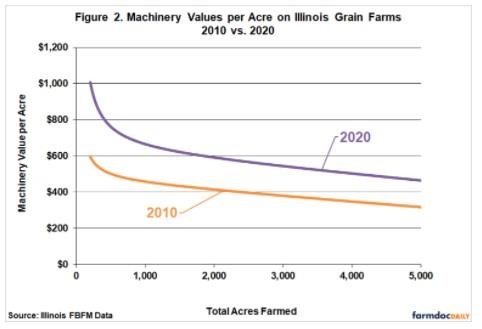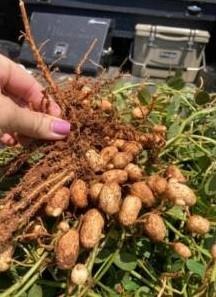
For example, we applied fungicide to our single-crop soybeans at the beginning of August, two weeks earlier than planned, because frog-eye leaf spot was becoming a problem. This disease causes defoliation, reducing photosynthesis and making it much harder for the soybean plants to fill pods. At the same time, we included an insecticide because a variety of worms and tiny insects were becoming a problem. The pest list included fall armyworms, loopers and velvet bean caterpillars, as well as an invasion of three-cornered alfalfa leaf hoppers and kudzu bugs. These pests eat leaves, flowers and girdle limbs, contributing to decreases in yield. We hired the airplane to apply the fungicide and insecticide combination, and the plants are happy now, with pods ranging in length from 1.25 to 4 cm, or .5 to 1.5 inches.

Our double-crop soybeans are starting to bloom, and they also look really good. We applied grass herbicide and foliar nutrients to them in early August. The herbicide eliminated weed competition. The nutrients supplemented the nutrients available in the soil, because they are the second crop growing in those fields this season.
The peanuts continue to bloom and peg, sending out stems from the flowers that grow into the ground, that ultimately develop into the peanuts. This crop is very susceptible to disease, so to keep it healthy, we apply a fungicide to it every two weeks with our ground sprayer. The peanuts that have developed so far are clean, without any sign of disease, and already are a good size. That’s promising for this year’s crop.
The cotton has grown to a size that allows the branches to grow toward the center of the rows, which we refer to as “lapped,” so we are staying out of the fields with the ground sprayer to prevent unnecessary damage from the sprayer wheels breaking branches or knocking off bolls. We hope to put wheel shields back on our sprayer this winter so we can do more of this spraying ourselves in the future. To keep our crop focused on its best yield potential, we have the airplane making an aerial application of a plant growth regulator every week to 10 days. It moves the plants from vegetative to reproductive growth. Those applications also include boron, a nutrient that helps the cotton during fruiting, when the bolls develop.
Fall armyworms started invading our double-crop sorghum, too. We hoped a good rain would drown them, but we didn’t get enough rain to wash them away. We treated those fields with insecticide, and the crop is starting to look very good. We are hoping to finish out the growing season for this crop with minimal spraying.
Click here to see more...